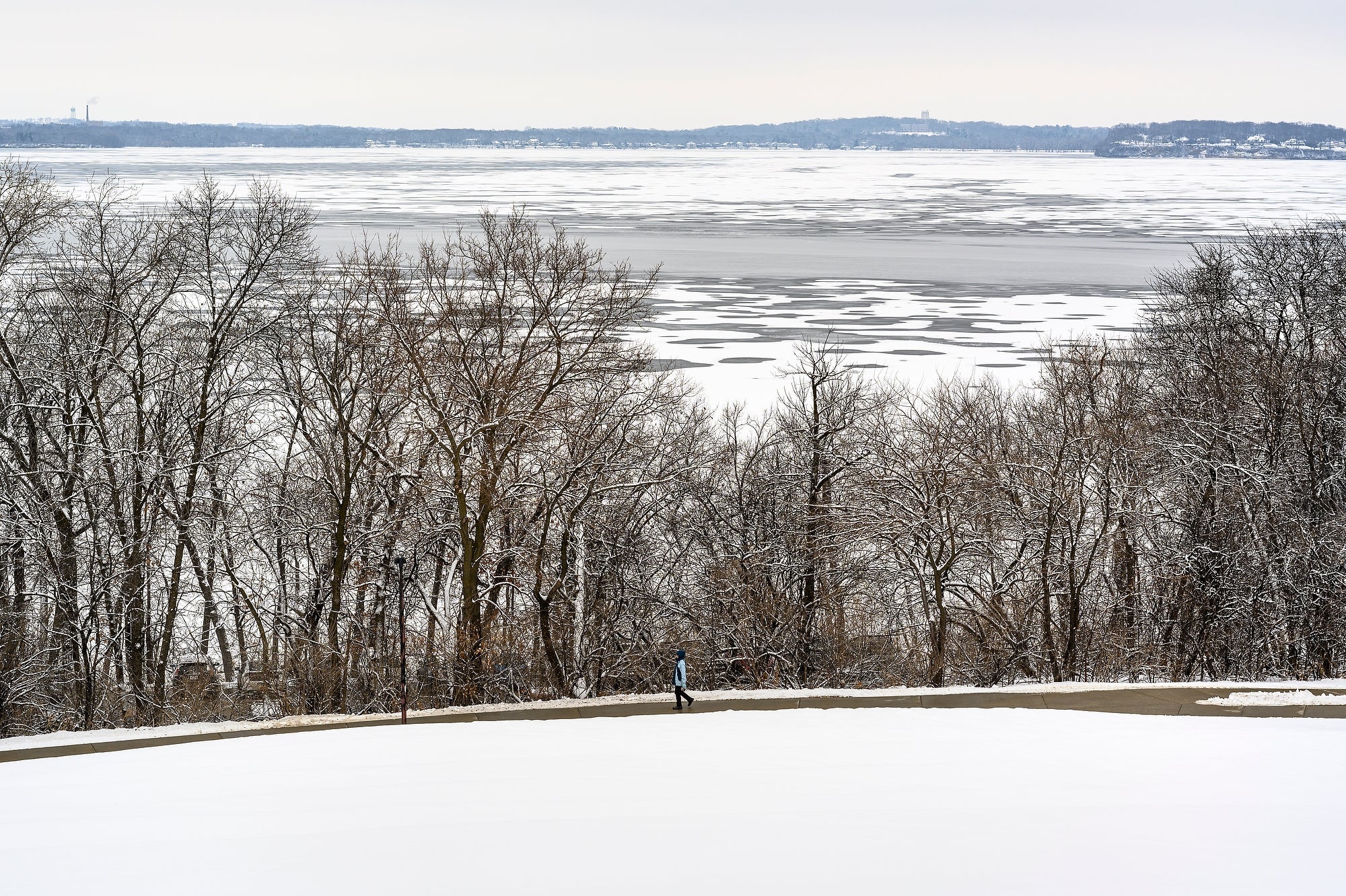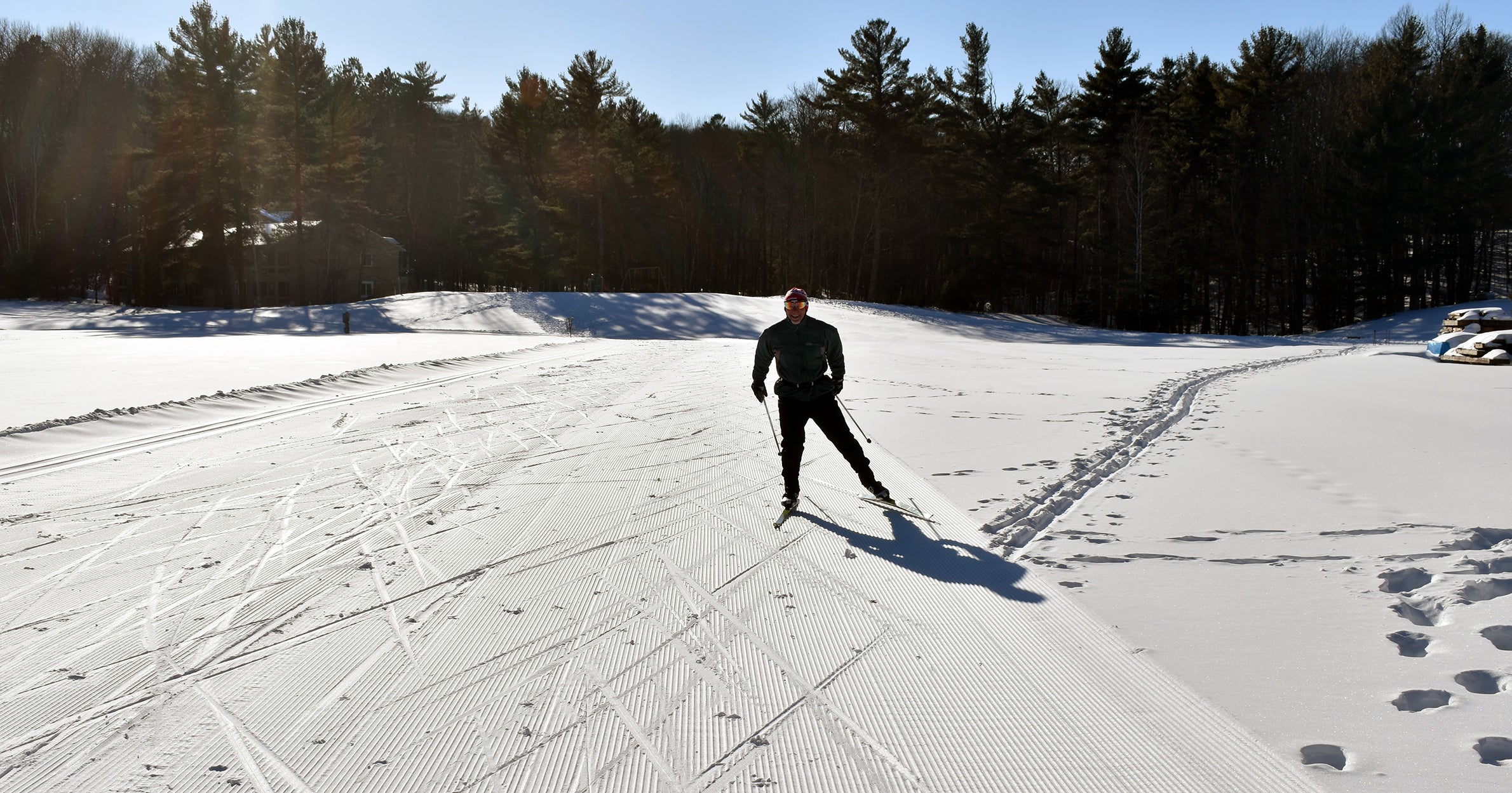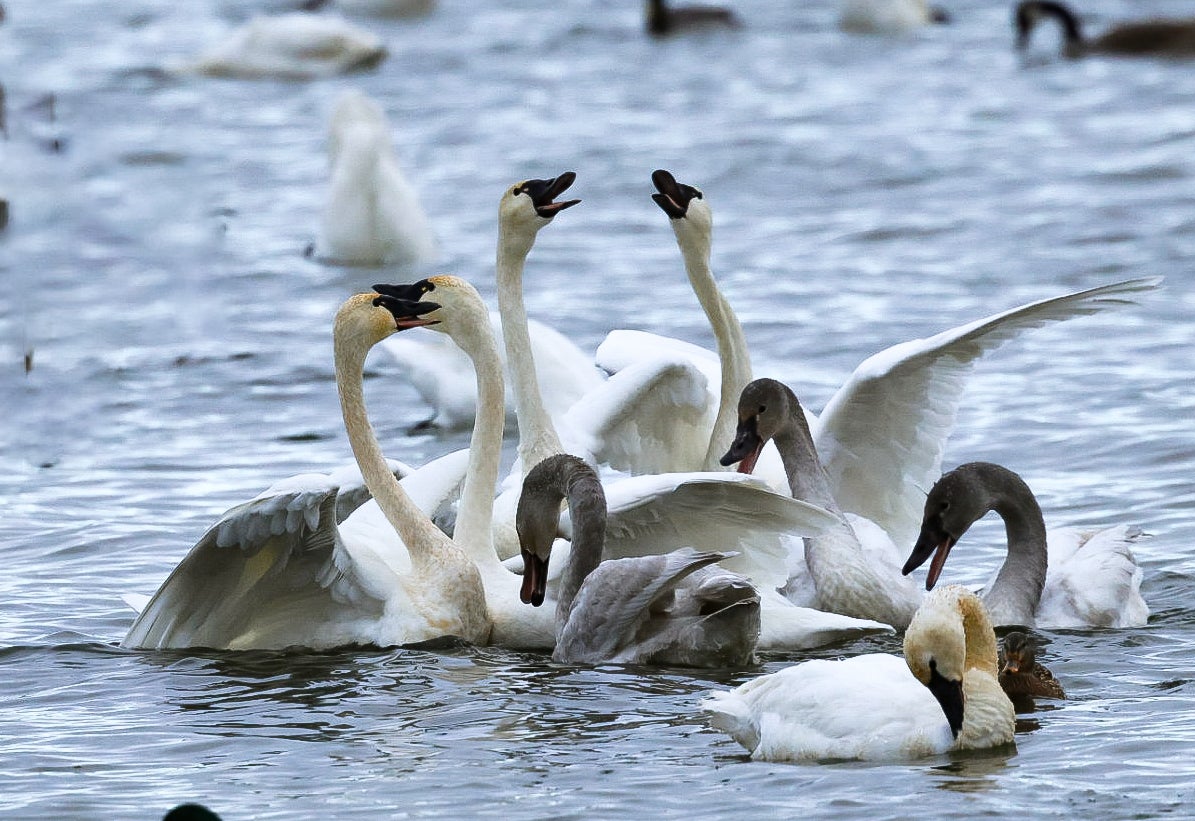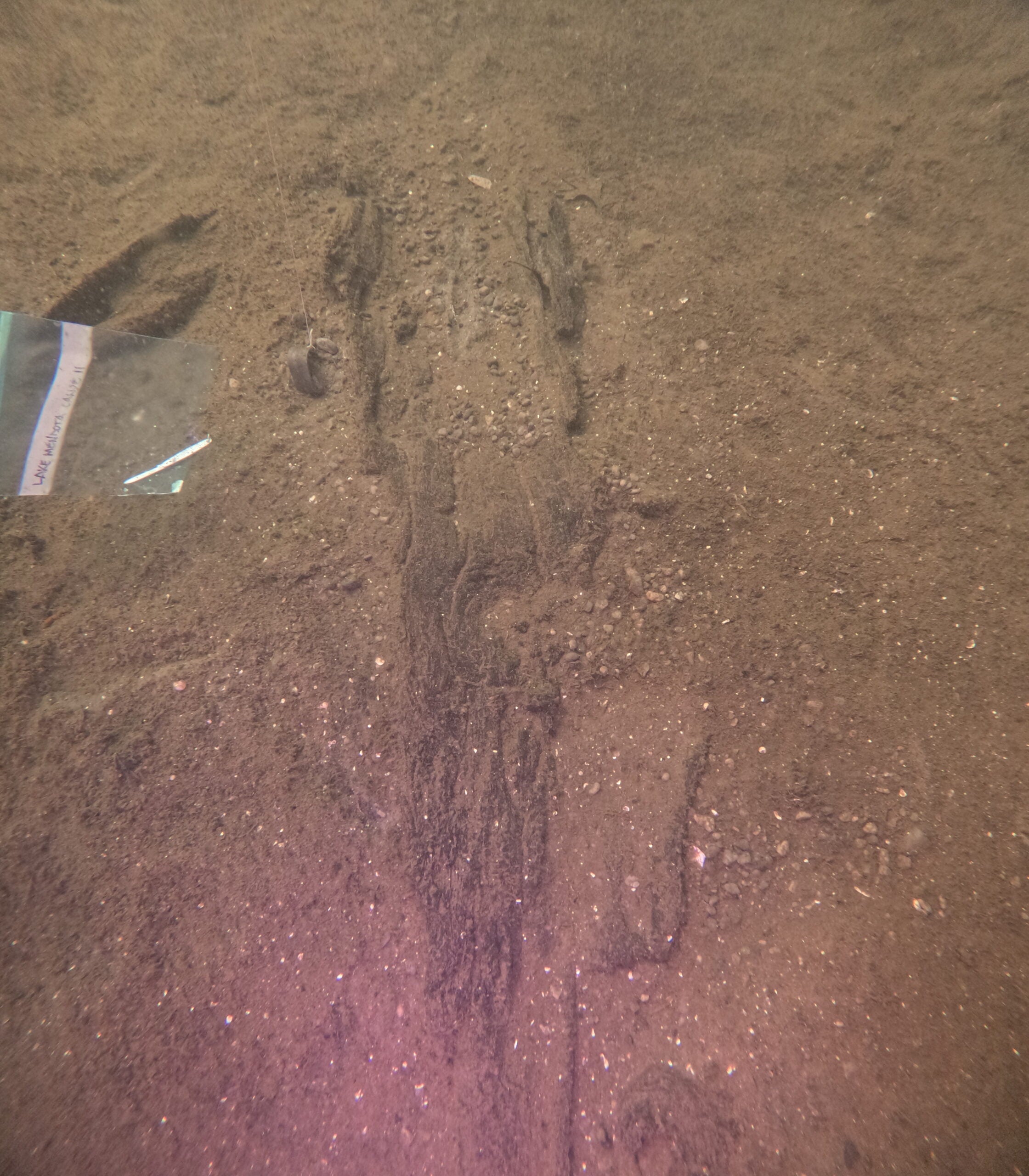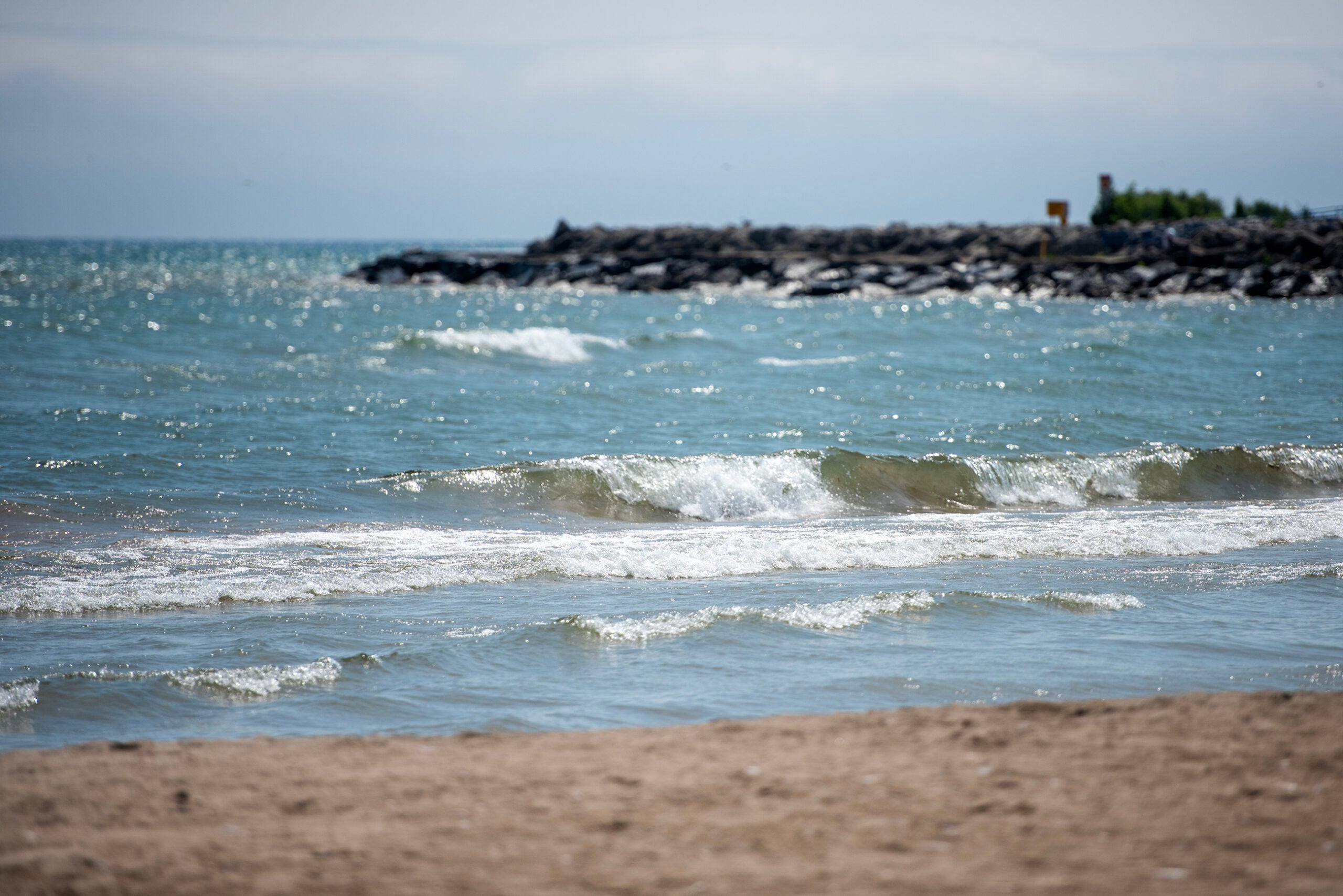After a mild start to winter in Wisconsin, most lakes across the state are now frozen after a week of bitterly cold temperatures.
But in the future, Wisconsin’s state climatologist says residents can expect more winters where lakes take this long to freeze — or winters where lakes never freeze.
Steve Vavrus is a senior scientist at the Nelson Institute for Environmental Studies at the University of Wisconsin-Madison. On Jan. 17, he joined WPR’s “The Morning Show” to explain the causes of lakes freezing later.
News with a little more humanity
WPR’s “Wisconsin Today” newsletter keeps you connected to the state you love without feeling overwhelmed. No paywall. No agenda. No corporate filter.
Stretching back to the 1850s, Lake Mendota near Madison typically froze around Dec. 20 or 21, Vavrus said. But modern norms are moving much later in the season, with plenty of January freezes in recent years.
Vavrus said Lake Mendota is great to study, because researchers have kept thorough records of its freezes. Other lakes might have spotty historical records or none at all.
“We have a 170-year-long continuous record, which is unusual not just for the state but for the whole country and really for the whole world,” he said.
On “The Morning Show,” Vavrus discussed the causes of late freezes as well as how researchers measure and study frozen lakes.
The following was edited for brevity and clarity.
Kate Archer Kent: Will winters without frozen lakes or short periods of frozen lakes become more common in Wisconsin due to climate change?
Steve Vavrus: I think they will. We’ve seen a pronounced change in the winter climate over the last 25 years. It’s almost like a regime shift for generally warmer winters in Wisconsin. We have had some exceptions within there, but generally the winters have been considerably warmer than in the years prior to 1998. That’s reflected in the Madison ice records for Lake Mendota, with later freeze-ups and earlier thaws.
Lake Geneva in southeast Wisconsin has pretty good ice records as well, and we know that it has remained unfrozen during four winters this century — since 2000. That is really significant, as a climate change signal, to actually remain unfrozen for the entire winter. If you have a winter ice festival or snow festival around Lake Geneva like they have, that’s not really great news.
KAK: Considering the climate is in an El Niño cycle, did that cause a delay in lakes freezing this year?
SV: It’s really hard to determine how much of a role El Niño has played this winter. When we have strong El Niños as we have this winter, we often do have milder winters.
But there have been exceptions, too. When we look at some of the latest ice freezes on record for Lake Mendota — 2007, 1932 and even 2002 — those were either very weak El Niño winters or not El Niños at all. So, El Niño is not the only show in town. There are all sorts of other weather factors that affect our winter climate here.
KAK: It got really cold, but the temperature is shifting to the high 30s. How do frequent temperature swings affect lake ice cover?
SV: The ice cover has some memory. Even when it warms up, we’re still going to have some ice that thickened up during this cold snap. So, it doesn’t have an immediate effect as much as one might think.
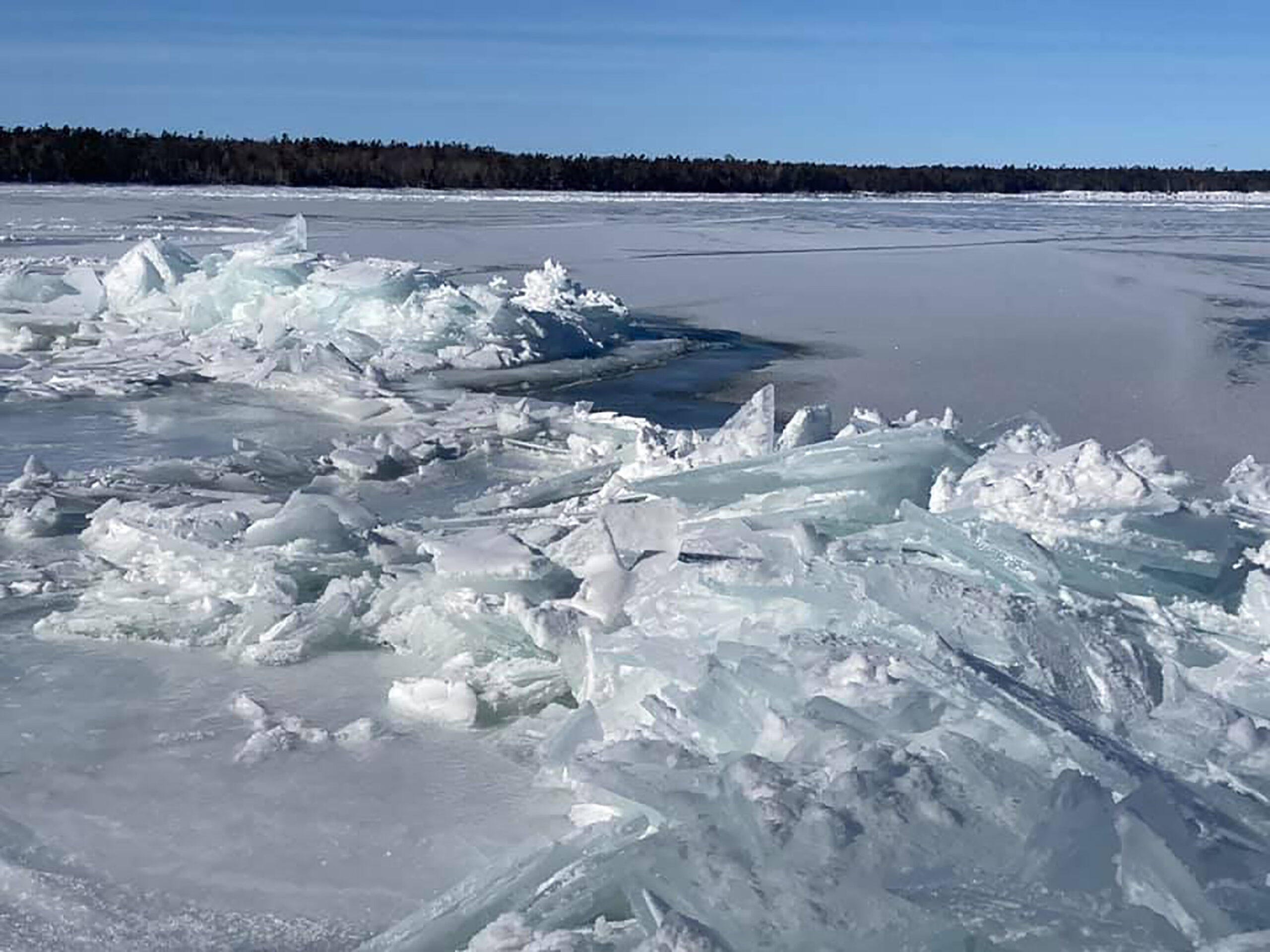
KAK: Is there substantial ice on Lake Michigan?
SV: The Great Lakes are also very slow to form ice this year. Right now, the Great Lakes basin-wide only have about 5 percent ice-covered area compared to 20 percent on average for this date. There was a big news story on New Year’s Day saying that over the last 50 years of record keeping, there was less than 0.5 percent of ice cover on the Great Lakes, which was a record low. Typically, there would be about 9 percent by then. So, just like in Wisconsin, the Great Lakes have been very slow to form ice this winter.
KAK: What might be happening there?
SV: It’s the warmth. Statewide, we had the warmest December on record in Wisconsin — about 15 degrees warmer than normal. That was true not only here but over the upper Midwest as well. Ice formation depends on pretty much just two variables: one being air temperature and the other being lake depth. A shallow lake freezes sooner. Deep lakes take longer.
KAK: When do scientists consider a lake to be frozen?
SV: It’s difficult. This is another one of the reasons why it’s hard to compare ice records from one lake to another. One observer might say if it’s 50 percent or more ice cover … Other people might be stricter. Other people might be looser.
For Lakes Wingra and Monona (in Madison), we try to use a 50 percent threshold for determining ice freeze-up. But for Lake Mendota, we have a different criterion. We consider it frozen when we think a boat would not be able to go from Picnic Point over to either Maple Bluff or Governor’s Island because there is too much ice. So, if that transect is frozen over, we consider Lake Mendota to be ice covered.
KAK: For thaw dates, do you have a similar setup?
SV: It is a similar type of setup, although we don’t actually go out on a boat. The point is that we’re trying to maintain the same methodology that we think people used 100 to 150 years ago. If somebody gave the State Climatology Office a fancy drone where we could fly over the lake and get a really good determination of the melt-off or freeze-up, that would be more accurate. But then we wouldn’t be able to be consistent with the older records.
KAK: How does one check the thickness of lake ice?
SV: It’s typically done with an auger, and you can just drill down and simply measure it. Anglers are very familiar with doing this. It’s very low tech, but it’s also very accurate. There are models that can be used to estimate ice thickness that are based mainly on the overlying air temperature over time, but there’s no substitute for actually going out in the field and getting a nice measurement to know how thick the ice is in your location.
Wisconsin Public Radio, © Copyright 2026, Board of Regents of the University of Wisconsin System and Wisconsin Educational Communications Board.
